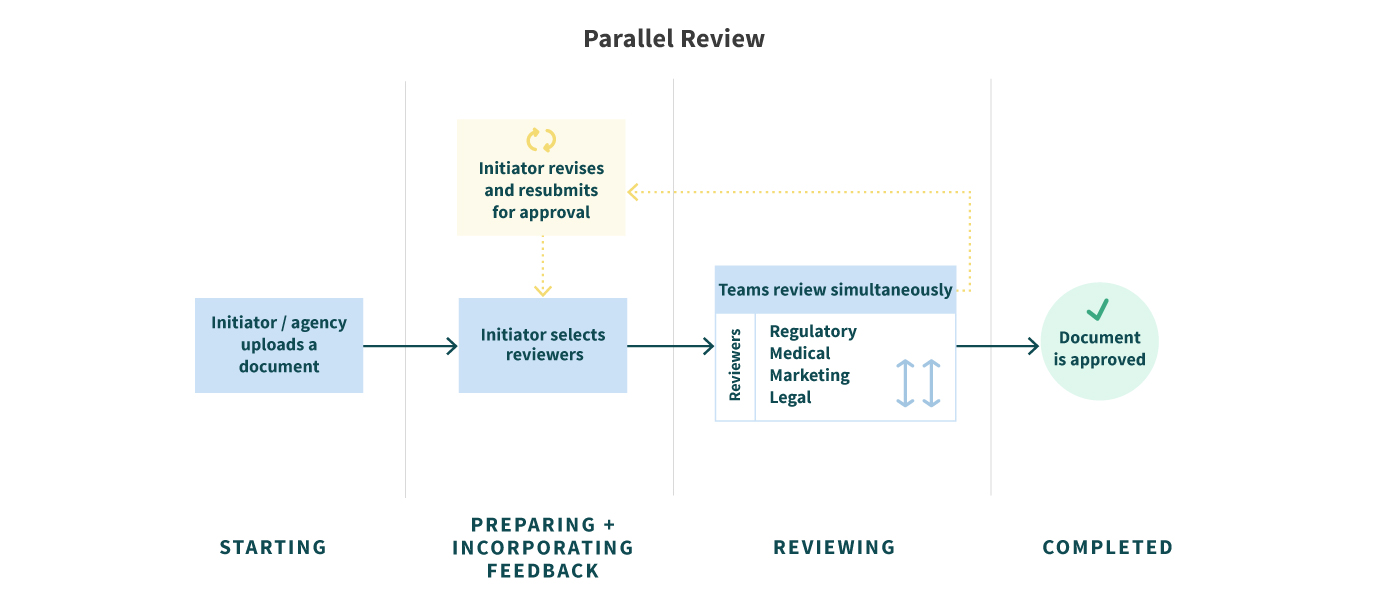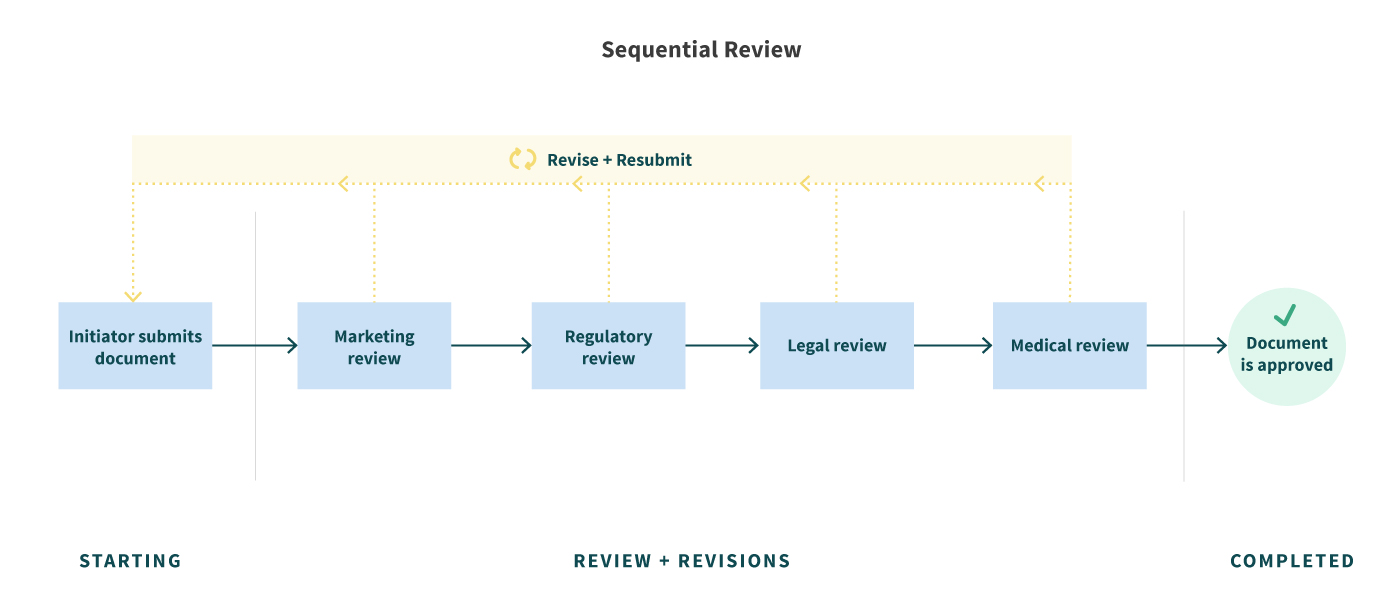When it comes to your promotional and medical information review processes: do you know if you’re using the right review format for your life science organization?
Depending on the age and stage of your organization, there are several ways to approach your content review process and set your teams up for success. It’s also worth noting that a content review process that you used while preparing for commercialization may no longer be the best fit if you know you have several products on market – it all depends on where you’re at and what your priorities are.
Let’s break down the three types of ad/promo and medsci content reviews and the pros and cons of each so you can make an informed decision about what’s best for your organization now and in the future.




